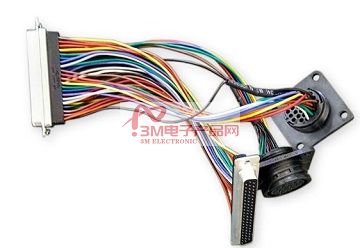Categorization:Product Information
Wiring harness design refers to the design and layout of a wiring harness system in an electronic device for specific application requirements. A wiring harness is an organized structure consisting of a group of wires or cables used to transmit power, signals and data. The basic elements of wiring harness design include the following: Functional Requirements: The first task of wiring harness design is to fulfill the functional requirements of the equipment. This includes determining the types of power, signals, and data that need to be transmitted, as well as the electrical characteristics required of the harness, such as current capacity, voltage level, impedance matching, etc. Physical constraints: Harness design needs to take into account the physical constraints of the device, such as space limitations, component locations and dimensions. The harness must fit the shape and structure of the equipment and be able to be securely mounted and connected to other components. Environmental Factors: Harness design must consider the environmental conditions in which the equipment is located. This includes temperature ranges, humidity, vibration, corrosive substances, etc. Wiring harnesses must be selected with proper insulation and protection to ensure reliability and durability of the harness in harsh environments. Electromagnetic compatibility (EMC): Harness design needs to consider electromagnetic compatibility to prevent electromagnetic interference and sensitivity problems. Harnesses should be shielded and filtered to minimize the occurrence of interference and comply with relevant EMC standards. Manufacturing and Assembly: Harness design needs to consider the feasibility of manufacturing and assembly. This includes the selection of suitable connectors, terminations and fixtures to facilitate the manufacturing and installation process of the harness. The design should also consider ease of maintenance and repair so that the harness can be replaced or repaired if needed. The general steps in performing a wire harness design are as follows: Determine requirements: Understand the functional needs, physical constraints and environmental requirements of the equipment. Communicate with the design team, engineers and customer to clarify design objectives and constraints. Electrical design: Determine the electrical characteristics of the wire harness based on functional requirements, including current capacity, voltage level, impedance matching, etc. Select appropriate wires and insulation materials, and determine the layout and connection of the harness. Physical design: according to the physical constraints of the equipment, design the layout and path of the wiring harness. Consider the size, bending radius and mounting method of the wire harness to ensure that the wire harness can adapt to the shape and structure of the equipment.

About 3M electronic products network platform related to the introduction and sales of products briefly: 3M electronic products network - a professional agent / production / sales of a variety of {connectors | wiring harness | wire and cable products }; if you have a related [connectors | wiring harness | wire and cable products] procurement / purchasing needs or want to buy / to understand which connectors | wiring harness | wire and cable products we can provide solutions, please contact our business staff below; if you have a related [connectors | wiring harness | wire and cable products] sales / resources and promotion needs, please click on the "→ Business Cooperation ←" and discuss with a person! If you have related [connectors | harness | wire and cable products] sales / resources and promotion needs, please click on the "¡¡ Business Cooperation ←" and specialists to discuss!